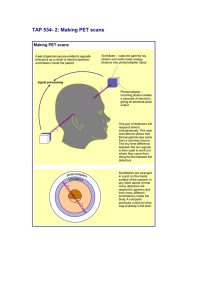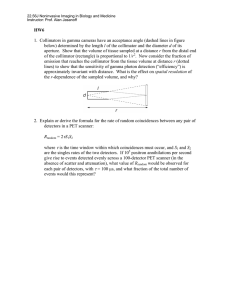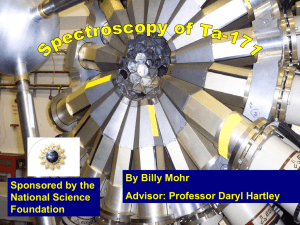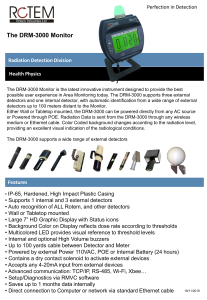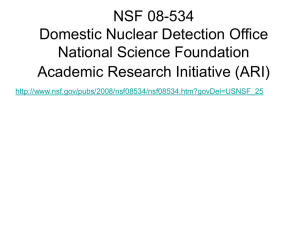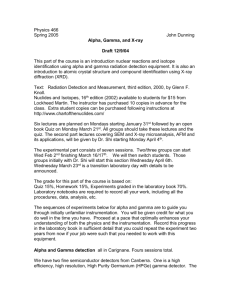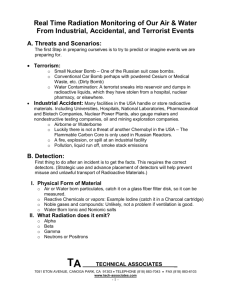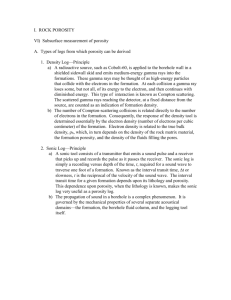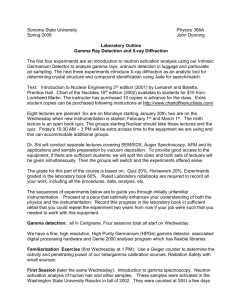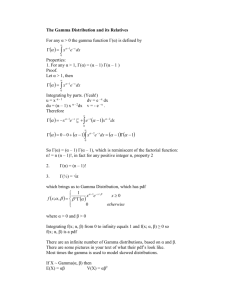Multi-Pixel Photon Counter (MPPC) detector coupled with high
advertisement
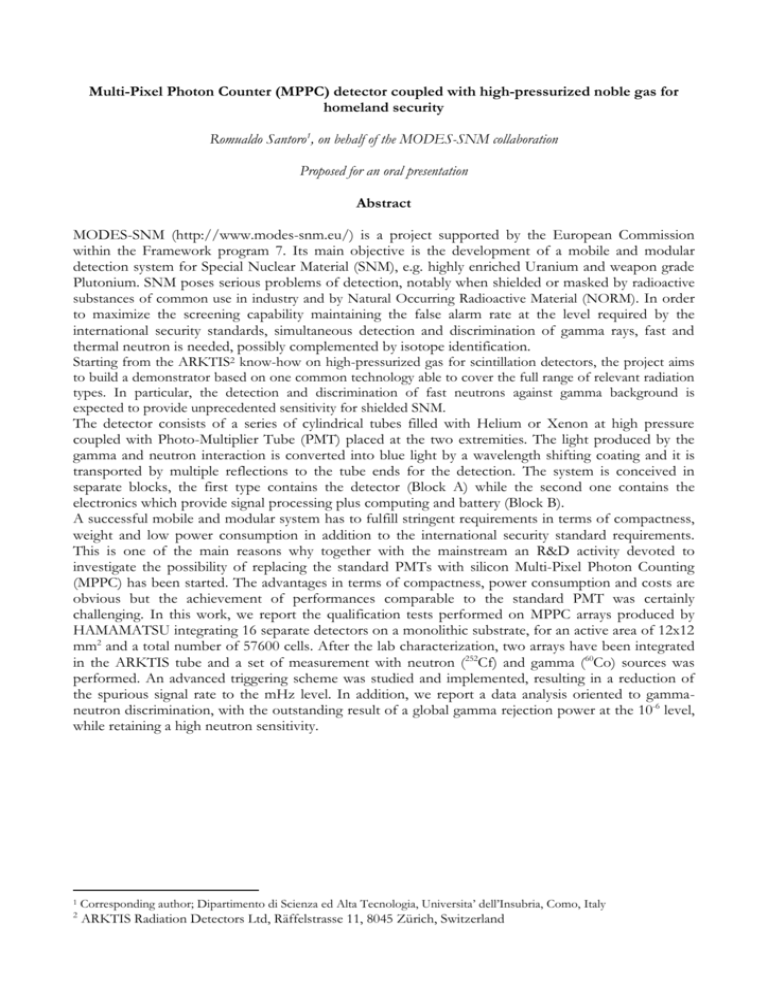
Multi-Pixel Photon Counter (MPPC) detector coupled with high-pressurized noble gas for homeland security Romualdo Santoro1, on behalf of the MODES-SNM collaboration Proposed for an oral presentation Abstract MODES-SNM (http://www.modes-snm.eu/) is a project supported by the European Commission within the Framework program 7. Its main objective is the development of a mobile and modular detection system for Special Nuclear Material (SNM), e.g. highly enriched Uranium and weapon grade Plutonium. SNM poses serious problems of detection, notably when shielded or masked by radioactive substances of common use in industry and by Natural Occurring Radioactive Material (NORM). In order to maximize the screening capability maintaining the false alarm rate at the level required by the international security standards, simultaneous detection and discrimination of gamma rays, fast and thermal neutron is needed, possibly complemented by isotope identification. Starting from the ARKTIS2 know-how on high-pressurized gas for scintillation detectors, the project aims to build a demonstrator based on one common technology able to cover the full range of relevant radiation types. In particular, the detection and discrimination of fast neutrons against gamma background is expected to provide unprecedented sensitivity for shielded SNM. The detector consists of a series of cylindrical tubes filled with Helium or Xenon at high pressure coupled with Photo-Multiplier Tube (PMT) placed at the two extremities. The light produced by the gamma and neutron interaction is converted into blue light by a wavelength shifting coating and it is transported by multiple reflections to the tube ends for the detection. The system is conceived in separate blocks, the first type contains the detector (Block A) while the second one contains the electronics which provide signal processing plus computing and battery (Block B). A successful mobile and modular system has to fulfill stringent requirements in terms of compactness, weight and low power consumption in addition to the international security standard requirements. This is one of the main reasons why together with the mainstream an R&D activity devoted to investigate the possibility of replacing the standard PMTs with silicon Multi-Pixel Photon Counting (MPPC) has been started. The advantages in terms of compactness, power consumption and costs are obvious but the achievement of performances comparable to the standard PMT was certainly challenging. In this work, we report the qualification tests performed on MPPC arrays produced by HAMAMATSU integrating 16 separate detectors on a monolithic substrate, for an active area of 12x12 mm2 and a total number of 57600 cells. After the lab characterization, two arrays have been integrated in the ARKTIS tube and a set of measurement with neutron (252Cf) and gamma (60Co) sources was performed. An advanced triggering scheme was studied and implemented, resulting in a reduction of the spurious signal rate to the mHz level. In addition, we report a data analysis oriented to gammaneutron discrimination, with the outstanding result of a global gamma rejection power at the 10-6 level, while retaining a high neutron sensitivity. 1 2 Corresponding author; Dipartimento di Scienza ed Alta Tecnologia, Universita’ dell’Insubria, Como, Italy ARKTIS Radiation Detectors Ltd, Räffelstrasse 11, 8045 Zürich, Switzerland
